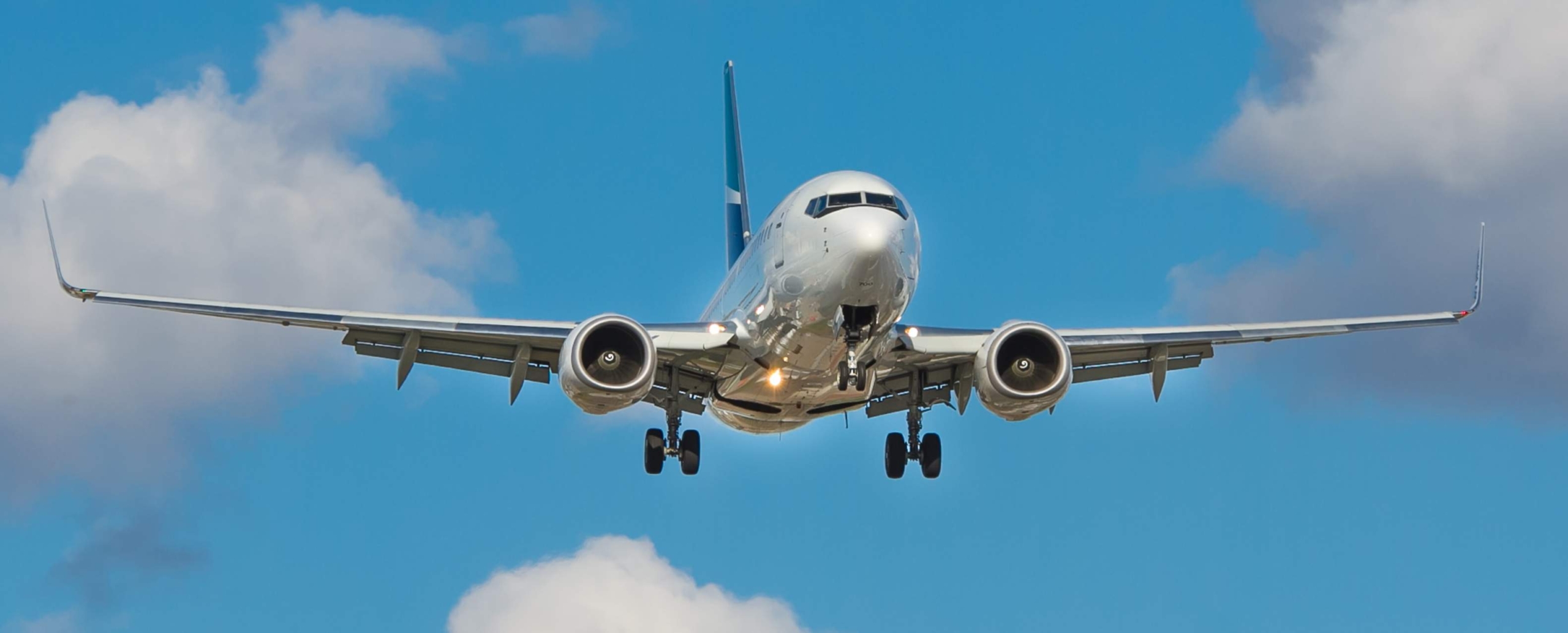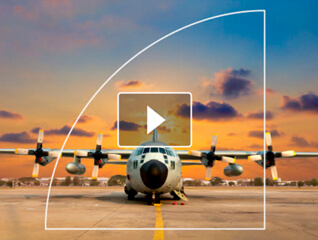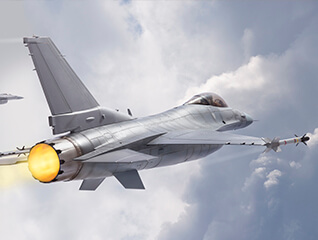The aerospace and defense industry is increasingly embracing electrification as a key trend, driven by the need to reduce carbon emissions, improve efficiency, and develop new technologies. In this article, we will explore the various facets of electrification in aerospace and defense, including its benefits, challenges, and the latest developments in the market.

What is Electrification and how it is affecting the Aerospace Market?
Electrification, as a trend in the aerospace and defense market, refers to the increasing use of electric power and propulsion systems in various aircraft and defense applications, so it refers to the process of using electric power to drive the propellers, engines, and other systems in airplanes, transitioning from traditional fossil fuel-based systems to electrically powered technologies. This shift towards electric propulsion aims to reduce the carbon footprint and improve the efficiency of aircraft operations. The main components involved in aircraft electrification include batteries, fuel cells, solar cells, electric actuators, electric pumps, generators, motors, power electronics, and distribution devices.
In the aerospace sector, electrification aims to improve aircraft performance, reduce emissions, and enhance overall efficiency. Some key applications of electrification in this context include:
- Electric Propulsion Systems: Electrification involves the development and utilization of electric propulsion systems, such as electric motors or turbo-electric propulsion. These systems use electric power to drive the aircraft’s engines, replacing or augmenting traditional jet engines. Electric propulsion offers advantages like increased fuel efficiency, lower emissions, and reduced noise levels.
- Hybrid-Electric Aircraft: Hybrid-electric aircraft combine traditional combustion engines with electric propulsion systems. The electric components can assist during takeoff, climb, and landing, reducing fuel consumption and emissions. They can also enable quieter operations in airports and residential areas.
- Electric Vertical Takeoff and Landing (eVTOL) Vehicles: Electrification has spurred the development of eVTOL aircraft, which are designed for short-distance urban air mobility and autonomous transportation. These vehicles use electric motors to power multiple rotors or ducted fans, enabling vertical takeoff and landing. eVTOLs promise reduced noise pollution, lower operating costs, and improved sustainability compared to traditional helicopters.
- Electric Unmanned Aerial Vehicles (UAVs): The use of electric power in UAVs offers extended flight times, increased payload capacity, and enhanced maneuverability. Electric UAVs find applications in reconnaissance, surveillance, cargo delivery, and other defense-related missions.
- Advanced Air Mobility: Advanced air mobility (AAM) is an emerging market that encompasses electric vertical take-off and landing (eVTOL) aircraft, air taxis, and personal aerial vehicles. Electrification plays a crucial role in the development of AAM, enabling these vehicles to operate more efficiently and sustainably.
Also in the defense sector, electrification offers several benefits, such as increased efficiency, reduced maintenance costs, and enhanced operational capabilities. Key applications of electrification in defense include Military Vehicles, Military Drones and UAVs and Naval vessels.
Why is electrification needed in the Aerospace and Aviation market?
According to a recent market analyses, electrification of aircraft rests on a few main factors:
- Reduced Costs: Projected operational cost savings and long-term cost reduction represent the biggest motivation for aircraft operators and producers to electrify aircraft. Electric aircraft also promise reduced maintenance, lower noise on take-off and landing, and reduced carbon and other emissions.
- Regional Travel Market: Regional markets, which are defined as markets in which trips are less than 500 km (~310 miles), are expected to lead growth for electric hybrid planes. This is because of the limited battery capacity of current technology and the new economic viability of serving these routes.
- Emissions Reductions: Emissions reductions are a major driver of implementation of electric aviation worldwide. While a combination of technologies involving drop-in replacement fuels such as SAF will improve emissions, a particularly strong area for improvement is in flights in the regional travel market. Short haul aircraft are considered to be up to 50% less efficient than long-haul flights based on emissions (Baumeister, Leung, and Ryley 2020).
- Noise Reduction: The NASA Regional Air Mobility report (Antcliff et al. 2021) cite noise and potential emissions as factors in local communities’ resistance to new airports and expanded air service. Regional electric aircraft have the potential to reduce the noise because of both the electric motor and steep climb/descent profiles of electric aircraft.
- Increased Accessibility: In addition to reducing emissions by switching air travel to clean electric power, encouraging a transportation mode shift away from ground transport for regional destinations could also reduce congestion and vehicle parking requirements at airport hubs for those accessing larger markets. For travelers to and from rural areas, electric aviation could provide an economical, clean alternative while reducing travel time and costs.
- Economic Development: Electric aviation has the potential to spur economic development by serving currently underserved areas, opening markets that have been phased out, repurposing general aviation airports to defray operational costs, and enhancing pilot training operations for colocated trade schools. There is also considerable interest in supporting emerging technology and innovation.
Overall, electrification as a trend in the aerospace and defense market is driven by the pursuit of cleaner and more sustainable technologies, improved operational capabilities, and the desire to reduce the carbon footprint associated with aviation and defense activities. While “only” 2-3% of worldwide emissions come from flying, according to Roland Berger, this could reach 10% by 2050 or even 24% if other sectors get cleaner faster as some experts are predicting. The International Civil Aviation Organization (ICAO), a United Nations agency, is calling for a cap on net aviation CO2 emissions as of 2020 (carbon-neutral growth). With greater adoption of electric propulsion, this could remain relatively steady at 2-5%.
Regional Trends and Market Growth
The global aircraft electrification market has been witnessing significant growth in recent years. According to a market research report, the market size grew from $4.52 billion in 2022 to $5.09 billion in 2023, registering a compound annual growth rate (CAGR) of 12.6%. The market is expected to further expand to $7.94 billion in 2027, with a CAGR of 11.8%.
The increasing demand for reducing carbon emissions is a major driver for the growth of the electric aviation market. As the aviation sector contributes nearly 3% of the world’s carbon dioxide emissions, it has committed to achieving carbon neutrality by 2050 by focusing on measures such as hydrogen power, carbon offsets, and cleaner fuel.
Strategic partnerships are emerging as a key trend in the aircraft electrification market, with companies collaborating to leverage each other’s resources and enter new markets.
Different regions across the globe are witnessing varying trends and growth patterns in the aircraft electrification market. North America, particularly the United States, is leading the market in terms of innovation and adoption of electrification technologies. The European region, with countries like the United Kingdom and Germany, is also actively investing in aircraft electrification to meet their carbon emission reduction goals.
Asia-Pacific is expected to be the fastest-growing region in the aircraft electrification market, driven by countries such as China, Japan, and South Korea.
But they are not alone. Saudi Arabia, for example, has shown interest in and initiated efforts towards developing electrification applications in the aerospace and defense sectors. The country has been actively involved in various projects and initiatives related to electric propulsion systems, hybrid-electric aircraft, and unmanned aerial vehicles (UAVs). For example, in 2019, Saudi Arabian Airlines, the national carrier, signed a Memorandum of Understanding with Airbus to jointly develop and test hybrid-electric propulsion systems for aircraft.
What are the obstacles to achieving aircraft electrification?
The idea of electrifying commercial aircraft is attractive due to its potential for reducing dependence on fossil fuels, improved operational efficiency, lower maintenance costs, enhanced environmental sustainability, and quieter operations.
However, there are several significant challenges that need to be addressed, including battery technology and thermal issues.
But by far, the biggest challenge to aircraft electrification nowadays is battery technology. With today’s battery technology, a large fully electrified aircraft would only be able to fly around 200 miles. These challenges are mainly related to two aspects:
- The weight of batteries is a significant challenge in aircraft electrification, as it can negatively impact the aircraft’s performance and efficiency. Developing lightweight and high-energy-density batteries is essential to overcome this limitation.
- The energy storage density of batteries is currently too heavy for commercial aircraft. Jet fuel contains 30-60 times more net energy per unit mass than batteries. As a result, fully electrified aircraft are only feasible for small aircraft with a limited number of passengers.
- Charging systems: Advanced battery technologies and charging infrastructure are the key components of electrifying a transportation fleet. Aircraft batteries will require chargers with power ratings exceeding that of current technology and will most likely require airline-specific standards
Developing batteries with higher energy densities is essential to overcome this challenge and enable the widespread adoption of electric aircraft
Thermal management is another key area that requires technology development, as advanced cooling systems and insulation materials are needed.
A cooling system is necessary for the integrated power module that powers high-power electronics, batteries, and electric drives, and to create a practical cooling system, a solution is needed that can handle heat rejection ranging from 50 to 800 kW during flight.
Also, improved materials with enhanced thermal performance and a lightweight system for cooling the electrical power system will need to be developed.
Not only developing battery and charging technology, but also understanding the grid impacts of these new loads, as well as the interconnection solutions that may be required, pose significant challenges that need to be investigated. As an alternative to conventional batteries, hydrogen technology could prove a denser energy storage option with the potential to reduce peak demand concerns. Further analyses of these topics are needed to understand the full extent of charging stations on infrastructure requirements.
Advanced battery technologies, such as lithium-ion and lithium-sulfur, are being developed to improve the performance and efficiency of electric aircraft. Other technologies such as fuel cells are also being researched on as an essential component in aircraft electrification since they generate electricity through a chemical reaction between hydrogen and oxygen. Fuel cells offer advantages such as high energy density, long operational life, and reduced emissions.
Different options such as Solar cells can also be integrated into the aircraft’s structure to generate additional power for onboard systems.
In this context, research and development is a key field to develop electrification in this industry, since all these new technologies require exhaustive research. As the race to dominate this market spurs opportunities, businesses cannot compromise on safety and pragmatism. o mitigate potential flaws such as these, rigorous testing is required. To keep up with accelerating development schedules, businesses will require validation test systems that adapt with changes to sensors, loads, and simulations. Hardware-in-the-loop (HIL) solutions enable customers to switch between these simulations and real hardware with the same test system, saving time during validation and facilitating reuse across a variety of test needs.
Conclusion
Aircraft electrification is a rapidly evolving trend in the aerospace and defense industry, driven by the need to reduce carbon emissions, improve efficiency, and adopt new technologies. With advancements in battery technology, fuel cells, and electric propulsion systems, the market for electric and hybrid-electric aircraft is expected to grow significantly in the coming years.
Research is the key to develop the technologies that will help to overcome the challenges and limitations of aircraft electrification, and make the future of aviation cleaner, quieter, and more efficient than ever before,
SAAB RDS has extensive expertise in providing Hardware-in-the-loop solutions and building full battery labs to test earlier in the design process with closed-loop simulated systems. We provide a system architecture featuring a real-time controller that runs deterministic test sequences to control test cell components like cycler and chiller/heater to measure all battery module/pack characteristicsbattery testing.
We will help you solve any complex research project. Talk to us today.


